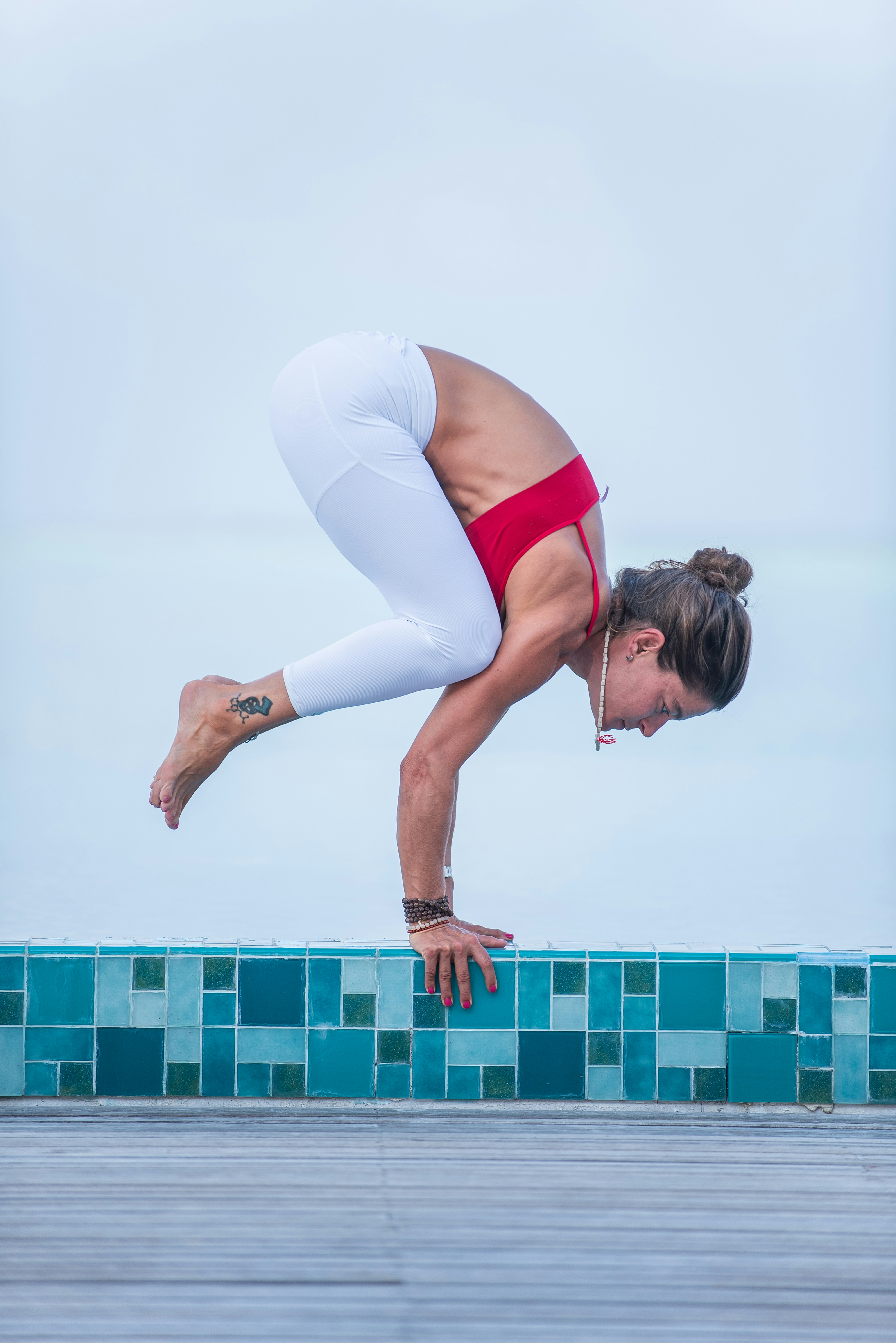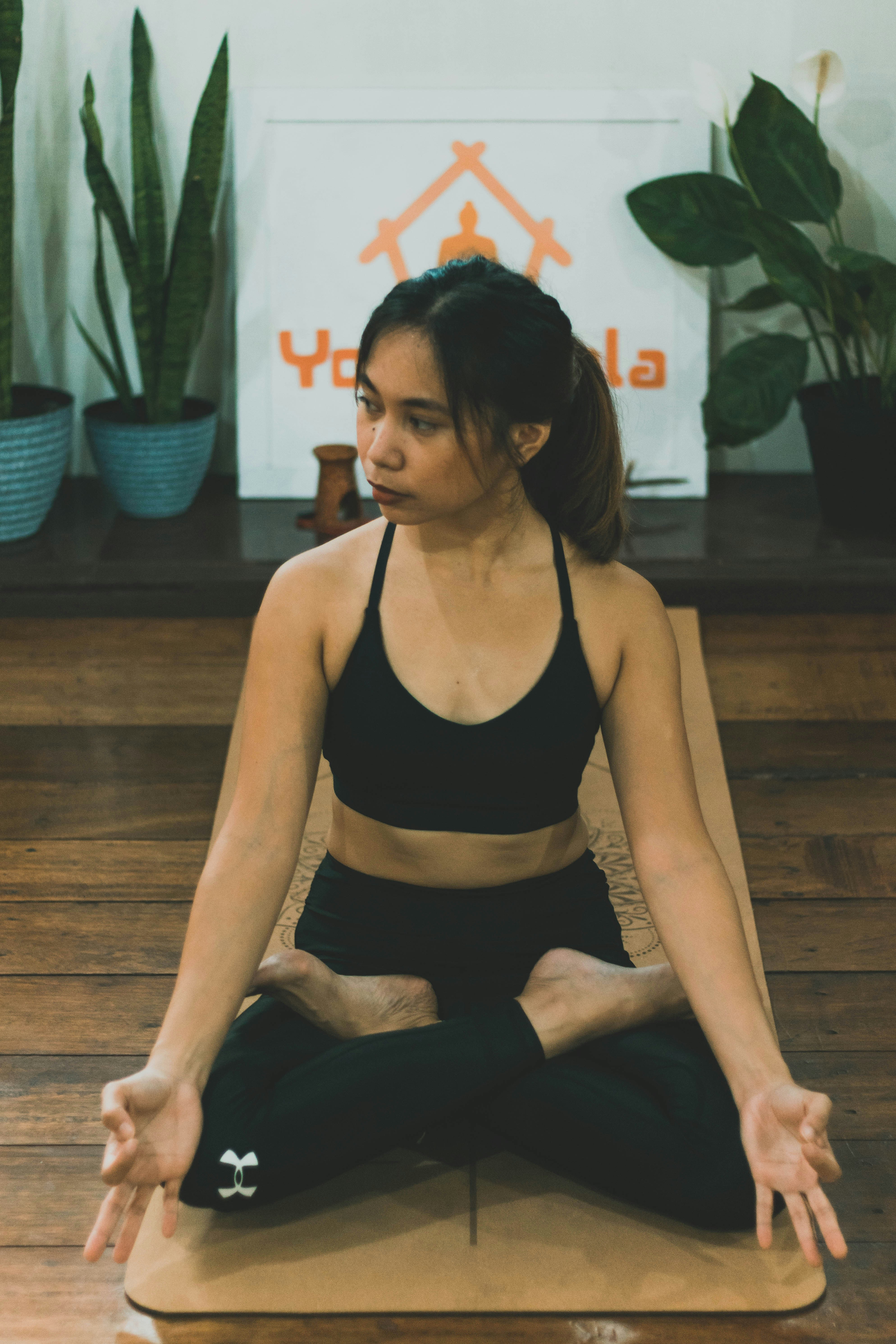Understanding Kakasana: The Fundamentals of Crow Pose
The Crow Pose, or Kakasana in Sanskrit, is a foundational arm balance in yoga that exemplifies the merging of strength, balance, and focus. This pose is not merely a display of physical prowess; it holds a significant place in yoga practice due to its myriad benefits. Engaging in Kakasana requires the coordinated effort of various muscle groups, fostering overall body awareness and stability.
During the execution of Kakasana, the practitioner primarily engages the core, arms, and wrists. The abdominal muscles are activated to maintain balance, while the upper body relies on the strength of the arms for support. Adopting this pose also incorporates the thighs and the hip flexors, as they assist in drawing the knees toward the chest, enhancing the sense of control and balance. Success in this pose goes beyond physical strength; it also requires mental focus. Practitioners must cultivate concentration to remain present and engaged, ultimately allowing for a smooth and stable experience.
In addition to building strength and balance, Kakasana offers numerous mental benefits. It encourages mindfulness, enabling individuals to overcome fears related to falling or losing balance. Furthermore, the act of balancing in this position can enhance overall body awareness, fostering a stronger connection between the mind and body. While Kakasana may seem intimidating at first, it is accessible to a variety of practitioners, from beginners to advanced yogis. Common misconceptions suggest that only those with significant upper body strength can practice this pose; however, with proper guidance and gradual preparation, anyone can work toward mastering Kakasana.
In essence, understanding the fundamentals of Kakasana provides aspiring yogis with the foundational knowledge to approach this pose with confidence. By delving into the physical requirements, mental preparations, and potential benefits, practitioners can appreciate the role of Crow Pose in their yoga journey.
Preparing for Crow Pose: Essential Warm-Ups and Preparatory Poses
Before attempting Kakasana, also known as Crow Pose, it is crucial to prepare the body adequately through a series of warm-up exercises and preparatory poses. This preparation helps cultivate the strength and flexibility needed for the pose, while also reducing the risk of injury. The key areas to focus on include the core, arms, wrists, and overall body alignment.
Begin with a few rounds of Sun Salutations to warm up the entire body. This sequence not only warms the muscles but also enhances flexibility. Next, incorporate poses such as Downward Facing Dog to activate the shoulders and arms. From this position, practice shifting your weight forward into Plank Pose, engaging your core muscles. This transition prepares your body for the balance required in Kakasana.
In addition to these foundational poses, it is essential to focus on specific warm-ups targeting the wrists and forearms. Start by performing wrist stretches, such as gently rotating and flexing the wrists in various directions. You can also place your palms on the ground with your fingers pointing towards your body, gradually shifting your weight forward to stretch the wrists effectively.
Moreover, cultivating core strength is vital for mastering Crow Pose. Engage in exercises like Boat Pose to strengthen the abdominal muscles. While in Boat Pose, remember to breathe deeply, as maintaining breath control is a key aspect when transitioning into Kakasana.
Lastly, mental focus cannot be overlooked. As you prepare physically, it is equally important to cultivate a sense of concentration and readiness within your mind. Setting an intention for your practice can enhance your connection to your body, and help maintain balance once you attempt the pose. Gradually building this foundation through consistent practice will support a more successful attempt at Kakasana.
Step-by-Step Instructions for Performing Kakasana
To successfully execute Kakasana, commonly known as the Crow Pose, it is essential to approach the pose with mindfulness and a clear understanding of body positioning. Begin by positioning yourself on a yoga mat in a squat. Spread your feet slightly apart, ensuring that they are about hip-width distance while keeping your toes pointed outward.
Next, bend your knees and lower your torso towards the ground. Place your palms firmly on the mat, about shoulder-width apart, with fingers splayed wide for stability. Ensure that your arms are straight and your elbows are slightly bent, aiding in weight distribution. The alignment of your arms is crucial as it will support your weight during the pose.
As you prepare to lift, shift your weight forward into your hands. Engage your core muscles and draw your knees up towards your triceps. This action is vital in allowing your body to defy gravity. Focus on keeping your gaze forward, rather than looking downward, as this will help you maintain balance and confidence.
Breathing plays a significant role in performing Kakasana effectively. Inhale deeply before you lift, and as you engage your core and lean forward, exhale steadily. This rhythmic breathing will ground you and enhance your balance. Remember, if you are feeling anxious about the pose, it is perfectly normal. To overcome this fear, practice the pose consistently in a supportive environment, allowing yourself to build confidence over time.
For beginners, modifications can be beneficial. Consider placing a cushion or bolstering under your knees while you practice, or perform the pose on a non-slip surface. As you progress and gain strength, gradually try lifting one foot off the ground, followed by the other when you feel ready. With patience and practice, you will find yourself mastering the Crow Pose in no time.
Common Mistakes and Tips for Improvement in Crow Pose
Practicing the Crow Pose, or Kakasana, can be both rewarding and challenging. As with any yoga pose, it is important to be aware of common mistakes that practitioners frequently encounter. One of the most prevalent issues is incorrect body alignment. When attempting to balance on your arms, misalignment can lead to instability, resulting in falls or discomfort. To counter this, ensure that your knees are positioned high on your upper arms, not resting on your elbows. This adjustment allows for better support and encourages a more centered balance.
Another common mistake is the lack of muscle engagement. Many individuals overlook the importance of engaging their core and arm muscles during this pose. An engaged core helps stabilize the body, making it easier to maintain balance. To improve this aspect, practitioners should focus on drawing their navel towards the spine while actively pushing against the ground with their hands. This maneuver ensures the arms are engaged, providing a solid foundation for balance.
In addition to these considerations, balance plays a crucial role in successfully executing Kakasana. Yoga practitioners should avoid leaning too far forward or backward, as this can lead to topple. Practicing weight distribution evenly between the hands and feet will aid in maintaining equilibrium. To enhance stability, consider using a block or cushion under your feet, which can offer additional support while you develop your strength and balance.
Lastly, patience and consistency in practice cannot be overstated. Mastering the Crow Pose takes time, and each attempt serves as a valuable step toward improvement. Regular practice encourages familiarity with the pose, which gradually enhances confidence. Incorporating these tips can lead to a deeper understanding and mastery of Kakasana, enriching the overall yoga experience.




Leave a Reply